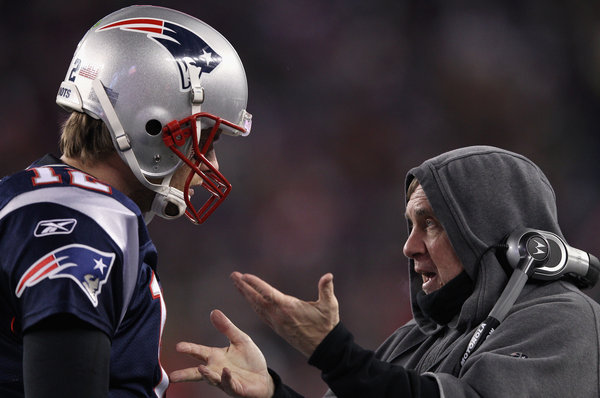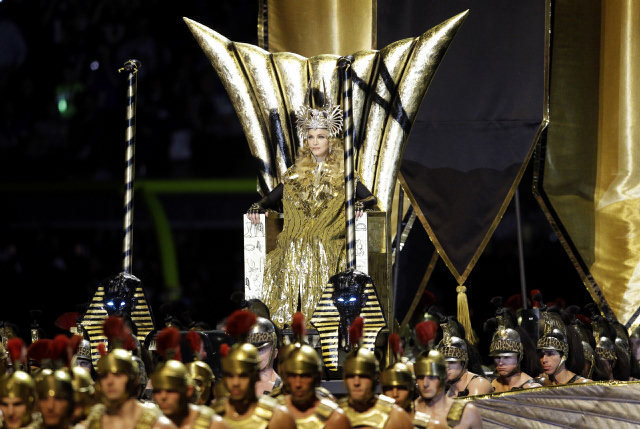OK, it also could be Star Wars, if Yoda–or is it Obi-Wan Kenobi?–would give advice to a helmeted officer of the Imperial Guard, or something like that. Either way, it’s a long way from Bart Starr and Vince Lombardi. By 2012, the Super Bowl has become the ultimate mainline mash-up: sports, advertising, food, fashion, fundraising, socializing–so why couldn’t a sports photograph double as a place where two sci-fi films come together? Come to think of it, that might make for a good ad. . . .
The basic structure of many of the Super Bowl ads is parodic: create a comic imitation of some habit of popular culture or everyday life, place your product in the mix, and hope that the audience of over a 100 million people likes the joke. The production values are sky high and the jokes are lame, but what did you expect? Which is one reason I like this photo, as it delivers quite a bit at a bargain price.
The allegorical significance of Star Wars is that the United States is reflected in both sides of the cosmic conflict between the Empire and the rebel forces: democratic ideals and imperial policies, civic virtue and a military-technocratic complex, freely given friendship and the libido dominandi. . . . The list goes on and that’s part of the point, as the two sides are not easily disentangled (as father and son each learned). Starship Troopers traded on the same market, and the allegory was both clumsier and more direct: an otherwise liberal society (say, on matters of class, gender, and race) could still become a fascist state sustained by perpetual war.
And so we get back to the photo above. On the one side, the fully equipped, imperial battlefield commander blazoned with propaganda symbols of a long extinct democratic revolution; on the other side, the sage in his humble, monkish habit has set technology aside to communicate a deeper, more organic wisdom. Will he be able to get through the training and other institutional habits encasing the young commander? But what if he is the one working for the Dark Side?
Silly, perhaps, but then football was never free of myth: think of The Four Horsemen of Notre Dame, winning one for the Gipper, and other hoary tales. Likewise, science fiction has always been about the present, and about the relationship between politics and society. The Super Bowl is a relative newcomer, but thanks to the power of spectacle it’s catching up fast. An extravaganza for the masses where tickets cost thousands of dollars, it knows a thing or two about contradictions. Thus, the photo above captures something of the spirit of the age: an age where all media are mixed media (to quote W.J.T. Mitchell) and mixing genres is now second nature in media production at all levels from major media events to what’s on your smart phone. Even so, it’s still a photo from the sports page. To really see how far fantasy football can extend, you have to go to Madonna.
Eat your heart out, Cleopatra. The material girl keeps the political allegory going strong, but now we’re back in a Pharaonic court. Like what you see, America? This past could be your future, and remember: the job of litter bearer can’t be outsourced.
Or maybe it’s just for fun. Or perhaps it’s really a football picture after all. You make the call.
Photographs by Elsa/Getty Images and Matt Slocum/Associated Press. I discuss Madonna’s use of the courtly style in Political Style: The Artistry of Power, pp. 83-86.
Cross-posted at BAGnewsNotes.


Bread and Circuses
http://www.efn.org/~hkrieger/breadcircus.jpg
[…] Starship Troopers and Other Super Bowl Fantasies […]